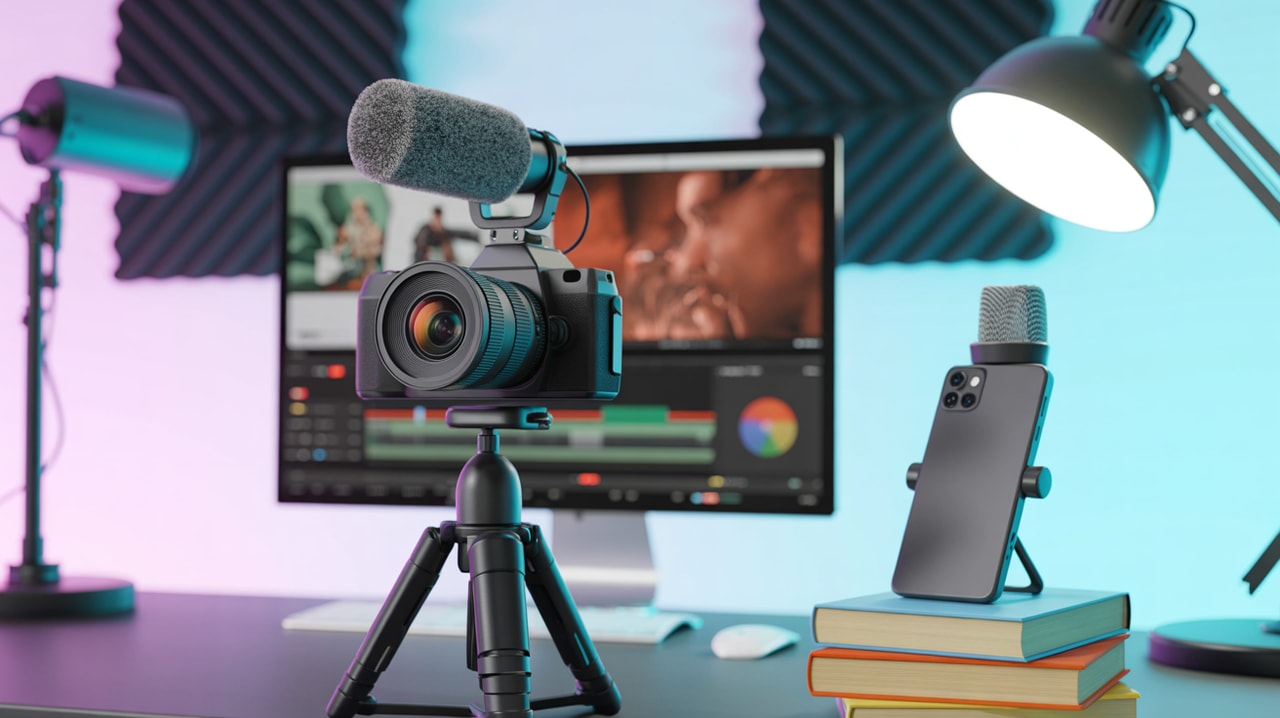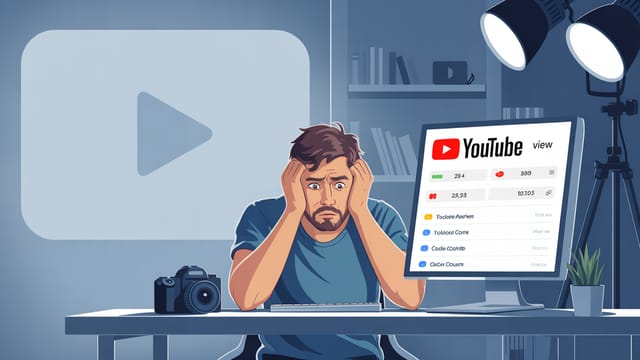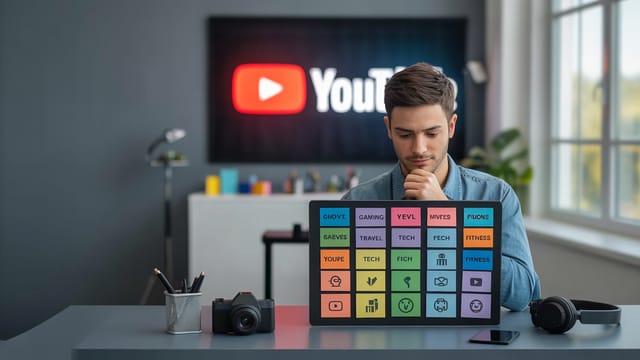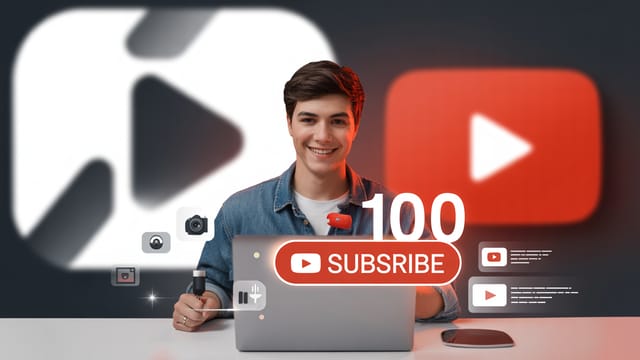
Ready to get your next 10,000 subscribers?
Join thousands of creators who use Subscribr to create faster, better YouTube videos.
The Psychology of Production Value: What Gear Choices Viewers Notice
As a YouTube creator aiming for growth, you’ve probably found yourself scrolling through endless reviews of cameras, microphones, and lights, wondering: "Does any of this really matter to viewers?" It's easy to get caught up in the specs – 4K resolution, bit depth, frame rates – and feel like you need the latest, most expensive gear to stand out.
But here’s a crucial truth: viewers don't watch YouTube for your camera's sensor size. They watch for the value you provide – the information, entertainment, connection, or transformation you offer. While production quality plays a role, its impact on viewer perception and channel growth is often misunderstood.
This article will dive into the psychology of production value on YouTube, helping you understand what elements your audience actually notices, where your gear budget will make the biggest difference, and how much quality is truly "enough" for your niche.
Content Value Reigns Supreme
Before we talk about cameras and microphones, let's reinforce the most critical factor: content value. No amount of polish can save a video with a weak idea, poor script, or lack of audience understanding. The YouTube algorithm and viewers alike prioritize content that is engaging, solves a problem, or provides a desired experience.
Think Media Podcast's strategy insights consistently highlight this, stating that content value is "infinitely more important than production value." Videos filmed with basic equipment, sometimes even described as looking like they were shot on a "baked potato," can outperform highly produced videos if the content is valuable, engaging, and authentic.
Many channels have grown significantly starting with minimal gear. Channels like @theoutdoorempire (53.9K subscribers, over 13 million views) or @mysurvival-wp9bh (60.7K subscribers, over 17 million views) demonstrate that a clear niche and valuable content (camping gear reviews, survival vlogs) can attract a large audience even if the initial production isn't Hollywood-level. Their success isn't built on technical perfection, but on connecting with viewers through relevant, engaging topics.
The core elements that truly matter are whether people can see and hear you clearly, if your message comes across effectively, and if the video is inherently engaging. Avoid the trap of overspending on production if your core content isn't resonating, as this can lead to diminishing returns.
What Viewers Actually Notice: The Psychology
Viewers experience your video holistically, but certain technical elements can either enhance or detract from that experience, often on a subconscious level. Their perception of "quality" isn't just about resolution; it's about comfort, clarity, and immersion.
Bad audio is a Major Turn-Off (and More Noticeable Than Bad Video)
If there's one production element that viewers are least forgiving of, it's poor audio. Hissing, buzzing, excessive echo, or muffled sound is incredibly distracting and can make even the most brilliant content unbearable to watch. Viewers will often click away immediately if the audio is bad, even if the video looks decent.
Strategy experts agree: while "good enough video" is acceptable, "good audio" is essential. Think Media Podcast emphasizes avoiding common audio issues like hiss, buzzing, echo, or audio only in one ear. These problems make it hard for viewers to focus on your message, leading to frustration and decreased watch time. Channels dedicated to audio education, like @Audio University, have videos with hundreds of thousands of views discussing the nuances of sound, highlighting the creator community's understanding of its importance.
Your audience needs to hear you clearly to understand and connect with what you're saying. Bad audio creates a barrier to that connection.
Lighting Makes a Bigger Difference Than Camera Specs
While resolution gets a lot of attention, good lighting has a far more significant impact on the perceived quality of your video. Proper lighting can make an affordable camera look much better, while poor lighting can make an expensive camera's footage look amateurish.
good lighting ensures viewers can see you and your subject clearly. It adds depth, can create mood, and makes colors look more accurate and vibrant. You don't need a professional studio setup to achieve good lighting. Natural light from a window can be incredibly effective. Simple, affordable LED lights can also drastically improve your video's visual appeal by providing consistent, flattering illumination.
Camera Stability Matters
While perhaps less critical than audio or lighting, shaky, unstable footage can be distracting and even nauseating for viewers, especially on larger screens. Using a tripod or even just propping your camera or phone against a stable object can significantly improve the viewing experience.
Resolution (4K vs 1080p): It Depends on Your Niche and Audience
Do viewers care about 4K on YouTube? For most niches and viewers, the answer is not as much as you might think, and often less than they care about audio or lighting.
While 4K offers more detail, many viewers watch YouTube on mobile devices or laptops where the difference between 1080p and 4K is negligible or impossible to discern. Furthermore, inconsistent internet speeds mean many viewers may not even be able to stream in 4K reliably.
The "acceptable quality within your niche" principle applies strongly here. For niches like tech reviews where showcasing product details is crucial, higher resolution might be more important. Channels like @Booredatwork.com (650K subscribers) or @Shutterandvoyages (659K subscribers) in the tech space often utilize high-quality visuals to showcase products effectively. However, for a commentary channel or a podcast-style video, 1080p is perfectly sufficient and often preferable due to smaller file sizes and easier editing.
Focusing on solid 1080p footage with good lighting and stable shots will serve you far better than struggling with 4K workflow and storage if your content doesn't specifically require that level of detail.
Where to Invest Your Gear Budget for Maximum Impact
Given that budget constraints are a reality for most creators, making smart investment decisions is key. Prioritize gear that directly addresses the production elements viewers notice most.
-
Audio First: Your first significant gear investment should almost always be a dedicated microphone. Even an affordable USB microphone or lavalier mic will sound dramatically better than your camera's built-in microphone. This is where you'll get the most bang for your buck in terms of viewer retention and perceived professionalism.
-
Lighting Second: Next, invest in lighting. This doesn't have to break the bank. A simple ring light, a softbox, or even strategically placed household lamps can make a huge difference in how your video looks. Consistent, flattering light improves clarity and visual appeal more than a camera upgrade often will.
-
Camera Third (or Later): Start with the camera you have, whether it's a smartphone or a basic DSLR/mirrorless camera. Modern smartphones shoot in excellent quality, often 1080p or even 4K. Learn to use your current camera effectively with good audio and lighting before considering an upgrade. When you do upgrade, consider how the new camera fits your specific needs and content style, rather than just chasing the highest resolution or frame rate.
-
Stability: A basic tripod is an inexpensive but crucial tool for stable shots. Even a small flexible tripod for a smartphone can make a big difference.
Remember, equipment selection should be justified by your content goals. A channel focused on showcasing intricate details (like macro photography or detailed product unboxings) might need a camera with better close-up capabilities, whereas a creator doing talking-head videos primarily needs excellent audio and good lighting. Don't buy gear just because it's popular; buy gear that serves your specific content and audience.
"How Much Quality is Enough?" Finding Your Niche's Standard
The question isn't about reaching some universal peak of production quality, but rather achieving the level that is "acceptable within your niche." This standard varies wildly across YouTube.
To figure out what's enough for you, look at successful and growing creators in your specific niche. Analyze their videos – pay attention to their audio clarity, lighting, camera stability, and overall visual style. What level of quality do they consistently maintain? Your goal should be to meet or slightly exceed that standard.
For example, tech review channels often have higher production standards because visually showcasing products is part of the value proposition. Channels like @Vector (138K subscribers) or @PeteMatheson (253K subscribers) demonstrate polished visuals that are expected by their audience. In contrast, a news or commentary channel might have much simpler production because the value is entirely in the information and the creator's personality.
Viewers are often more forgiving of lower production quality if the content is exceptionally valuable, the creator is highly engaging, or the niche itself has lower production expectations (e.g., vlogs shot on the go). Focus your energy on creating compelling content and ensure your production quality doesn't actively detract from that experience.
Strategic Gear Choices for Growth
The psychology of production value isn't just about avoiding distractions; it's also about using production elements strategically to enhance your content and connect with your audience.
- Enhancing Clarity: Good production makes your content easier to consume. Clear audio ensures your message is understood. good lighting helps viewers see what you're demonstrating or talking about.
- Building Trust and Authority: While not requiring cinematic quality, a baseline of clear audio and video can subtly build trust. It signals that you care about your content and your audience's viewing experience.
- Creating Mood and Immersion: In some niches, production elements like lighting, color grading, and camera movement can enhance the mood and immerse viewers in the experience (e.g., cinematic vlogs, short films).
Understanding these psychological impacts helps you make strategic gear choices that align with your content goals and style. If your goal is to teach complex concepts, prioritize audio clarity and screen recording quality. If you're building a personal brand through vlogs, invest in a camera that's easy to carry and good at capturing your personality.
Subscribr can assist in this strategic analysis. By using features like Channel and Video Intel and the Research Assistant, you can analyze successful channels and videos in your niche. Look beyond just subscriber counts and view numbers; pay attention to how they are produced. Does their success correlate with high-end gear, or are they thriving with simpler setups because their content is exceptionally good? This data-driven approach helps you understand the production expectations within your niche and make informed decisions about where to invest your resources for the greatest viewer impact.
Leveraging Your Existing Setup (Before Buying More)
Before you even think about buying new gear, focus on maximizing what you already have. Learn the fundamentals of good audio recording (reducing echo, positioning your microphone correctly). Practice using your camera's settings and understanding composition. Experiment with available light sources.
Often, improving your skills and technique with existing tools will yield better results than simply buying expensive new equipment you don't know how to use effectively. There are countless tutorials available (often on YouTube!) that can teach you how to get the best possible quality from your current phone or camera.
Tools & Resources: Focusing on What Matters
Navigating the world of YouTube gear and production can feel overwhelming, especially with budget constraints and uncertainty about what truly impacts viewers. Platforms like Subscribr are designed to help creators cut through the noise and focus on the elements that drive real growth: compelling content and understanding your audience.
Instead of getting lost in technical specs, Subscribr's tools, such as Channel and Video Intel, Research Assistant, and the Script Building Pipeline, help you prioritize content strategy, audience research, and effective communication. By analyzing what's working in your niche and providing tools to structure and write high-value scripts, Subscribr helps you build a strong content foundation. This allows you to make informed decisions about production quality, ensuring your gear investments support your content goals and resonate with viewer perception, rather than chasing unnecessary technical benchmarks.
Conclusion
The psychology of production value on YouTube reveals that viewers are primarily driven by content value and are most sensitive to elements that disrupt their viewing experience. Bad audio is a significant barrier, while good lighting is a powerful enhancer of perceived video quality. High resolutions like 4K are often less critical than clarity, stability, and the overall effectiveness of your message, depending on your niche.
Instead of fixating on having the absolute best gear, focus on achieving a level of production quality that is clear, comfortable to watch, and meets the expectations within your specific niche. Prioritize investing in good audio and effective lighting before upgrading your camera. Learn to maximize the potential of your existing equipment through skill and technique.
Ultimately, smart gear choices support great content. By understanding what production elements viewers truly notice and value, you can invest your time and money wisely, creating videos that not only look and sound good but also connect with your audience and drive the growth you're seeking.





